John Hurrell – 12 February, 2025
Thus when isolated from its collective context, each individual tactile/chromatic ‘vegetative' contribution has its own assertive presence—be that possibly spiky, coiled, dappled, reflective or morphologically lopsided. Some have more immediate initial impact than others. They might be based on rarely experienced visual sensation only, or unanticipated associations with a popular narrative.
At one end of the long room, a low field of diverse scattered (vaguely treelike) objects—a narrow strip—lies spread-out for us to walk through, as if part of a young forest reaching up beyond our knees, each item a catalyst for imaginative exploration that nudges us in exciting new directions. Other smaller clusters of mysterious assemblages are positioned in vertical configurations at the side, on most of the gallery walls. As is typical of Darragh, these multi-part wall and floor sculptures usually revel in hot glowing colour. Dark tones are rare.
Unlike trees in a copse or forest there is little uniformity in this unorthodox group of recombined found objects, only a celebration of individuality where an unrepeatable unique visual character is promoted. There are no species here, no generic standard forms that are oft repeated-or regulation textures. Templates are avoided. Instead, we come across unexpected materials, shapes, juxtapositions, alluded-to histories and earlier functionalities, that clash with their neighbours.
Thus when isolated from its collective context, each individual tactile/chromatic ‘vegetative’ contribution has its own assertive presence—be that possibly spiky, coiled, dappled, reflective or morphologically lopsided. Some have more immediate initial impact than others. They might be based on rarely experienced visual sensation only, or unanticipated associations with a popular narrative.
In her catalogue Darragh has listed 34 individual works, of which there are about half a dozen I’m visually drawn to, with three in particular I really like: those based on joined up plastic funnels so they form ‘trees’; decorated plastic hubcaps that are deliciously eccentric in their incrustations; and wonky painted ceramic plates that again are wonderfully nutty. I greatly admire her modifications of various collections of these objects.
Yet I do have some quibbles. With the orange funnel trees she has put tiny brackets around the necks of the outer funnel tubes to ensure the inside ones don’t slip out of position. These tightened reflective metal strips I find distracting and wish she had used glue, or painted them orange.
The wobbly jellylike ‘organic’ plates that look like they are shimmering in a pool of water and the ‘vulgar’ densely ornamental hubcaps laden with transparent acrylic beads are knockouts. Drooling over them I need a bib. These exemplary highs alone make Darragh’s show thrilling and well worth a visit.
John Hurrell
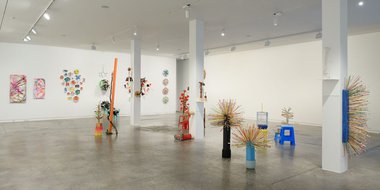
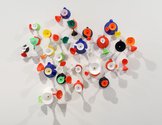



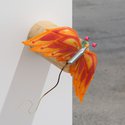
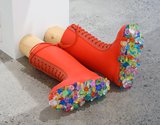

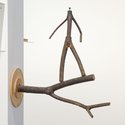

 Two Rooms presents a program of residencies and projects
Two Rooms presents a program of residencies and projects Advertising in this column
Advertising in this column
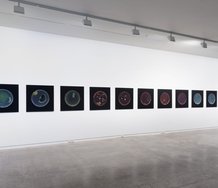
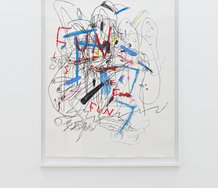

This Discussion has 0 comments.
Comment
Participate
Register to Participate.
Sign in
Sign in to an existing account.